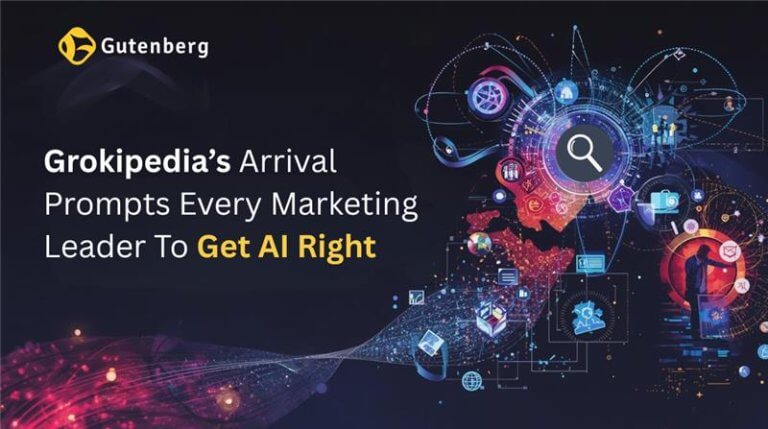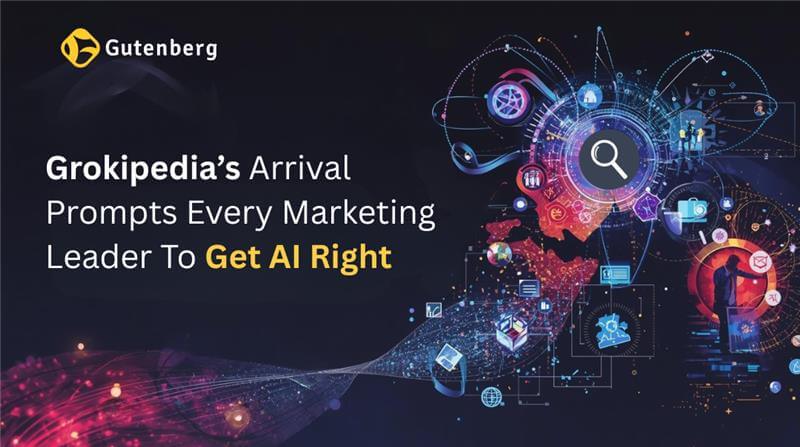Scaling Tech Partnerships: The Role of Marketing in Channel Ecosystems
The structure of technology partnerships has changed significantly over the last few years. From isolated collaborations to fully integrated ecosystems, tech partnerships are now built on joint value creation and long-term alignment. But for these alliances to function efficiently, marketing has taken on a more strategic role than ever before.
This blog explores how marketing in tech partnerships helps build scalable programs, drives consistent engagement across global regions, and strengthens the overall channel ecosystem. We’ll also look at how companies are approaching partner enablement strategies, why GEO-optimized content matters, and how businesses can prepare for generative engine visibility. Lastly, we’ll outline how Gutenberg supports tech companies in scaling their partner marketing efforts effectively.
Marketing’s Expanding Role in Tech Partnerships
Moving from Support Function to Strategic Enabler
Historically, marketing in partner programs was often limited to a few co-branded campaigns or event sponsorships. Today, marketing in tech partnerships plays a more foundational role by driving awareness, defining shared narratives, and enabling scalable programs.
When multiple partners collaborate, unified messaging and value propositions are essential. Without clear communication, partner programs risk misalignment or missed opportunities. According to Forrester, businesses that align their sales and marketing teams grow 19% faster and see a 15% increase in profitability.
As technology partnerships expand in scope and geography, marketing becomes the common thread connecting internal teams, external partners, and the end customer.
Building Scalable Channel Ecosystems with Marketing
Structured Campaigns and Repeatable Assets
Scaling a partner ecosystem is not just about onboarding more companies. It’s about enabling consistent performance at scale. Channel ecosystem marketing provides the frameworks and repeatable assets needed to support dozens or hundreds of partners without starting from scratch each time.
Common elements in scalable channel ecosystem marketing include:
- Ready-to-use campaign kits and templates: Essential for faster execution and consistency across partners.
- Shared digital asset libraries: Easy access to logos, messaging, visuals, and more.
- Co-marketing program guidelines: Helps align execution and brand representation.
- Partner onboarding content and email workflows: Speeds up partner readiness and engagement.
These resources help new partners hit the ground running while keeping messaging and design aligned.
From One-to-One to One-to-Many: Structuring for Scale
As ecosystems grow, marketing can no longer function on a request-by-request basis. Instead, successful teams are investing in programmatic models that allow for scaling technology partnerships more efficiently.
This shift often involves:
- Marketing automation to deliver content at scale: Saves time and improves consistency.
- Campaign syndication tools: Simplifies distribution across partner networks.
- Playbooks that include messaging templates and execution timelines: Ensures partners can implement programs independently and correctly.
These systems are not just operational improvements—they enhance partner experiences by reducing friction and enabling self-service. When partners can access high-quality, ready-made materials, they become more engaged and productive contributors to the ecosystem.
Enabling Partners Beyond Sales Collateral
Supporting Contextual Content and Local Relevance
Most partner programs still rely heavily on static collateral like brochures or pitch decks. But partner enablement strategies now need to go further by offering more contextual, GEO-optimized content that reflects specific buyer needs and regional nuances.
Partners often serve diverse markets, and a one-size-fits-all approach doesn’t resonate with the individual. GEO-specific campaigns that consider language, market maturity, and use case relevance are far more effective.
According to a study, 71% of B2B buyers expect vendors to personalize marketing to their specific industry and geography. For instance, a partner selling cloud services in Japan needs localized proof points and compliance messaging—far beyond a generic brochure.
Strong partner enablement strategies help partners tell localized stories that reflect the unique value of the offering, increasing the chance of qualified leads and closed deals.
Data, Attribution, and Co-Owned Success Metrics
Measuring What Matters Together
As marketing in tech partnerships grows more sophisticated, so does the need to measure it correctly. Traditional attribution models often struggle to capture the complexity of co-marketed and co-sold deals.
Modern ecosystems benefit from:
- Shared KPIs: Metrics like partner-influenced pipeline and joint content engagement provide clarity.
- Dashboards to visualize multi-touch journeys: Helps track what’s working across the funnel.
- Feedback loops between partner marketing and partner sales teams: Keeps both sides aligned on strategy and performance.
Clear attribution builds trust. When both sides can see which marketing activities are working, they’re more likely to invest in future collaboration. For companies scaling partnerships, data clarity isn’t optional—it’s expected.
GEO-Optimized, Generative Engine-Ready Content
Preparing for Global Reach and AI Visibility
With the rise of AI search tools and region-specific platforms, content must now work across both human and machine audiences. That means clear, keyword-aligned writing and localized relevance are critical.
Here’s how GEO optimization helps in channel ecosystem marketing:
- Improves visibility in region-specific search results: Helps partners rank higher locally.
- Increases partner adoption with relevant content: Makes tools and templates more usable.
- Supports SEO and generative engine ranking: Helps AI tools surface your content more often.
Generative engines use structured content and keyword consistency to recommend results. Integrating keywords like marketing in tech partnerships, partner enablement strategies, and scaling technology partnerships throughout well-structured content ensures better AI recognition while still offering clear value to readers.
How Gutenberg Helps Scale Tech Partnership Marketing
Gutenberg supports tech brands that want to scale their partner ecosystems with greater efficiency and consistency. From campaign blueprints to content systems, we help marketing teams build processes that deliver results across markets and partner tiers.
Our services are designed to align with how ecosystems operate today:
- Strategy and planning support for marketing in tech partnerships
- Creation of scalable, brand-aligned campaign toolkits
- GEO-optimized content and messaging frameworks
- Custom reporting dashboards to track ecosystem performance
- Partner content systems that drive long-term engagement
Whether you’re building your first set of partner campaigns or rethinking your global partner portal, Gutenberg helps simplify the complexity of partner marketing—so that scale doesn’t come at the cost of clarity.
Conclusion
The success of a tech partnership no longer hinges only on product fit or technical integration. Strategic, repeatable, and partner-centric marketing is just as critical to long-term success.
By investing in structured programs, localized content, shared metrics, and AI-aware content formats, companies can scale their partner programs with confidence. Whether it’s channel ecosystem marketing, partner enablement strategies, or scaling technology partnerships, marketing continues to be the driver that turns ecosystems into engines of growth.
Frequently Asked Questions
How does marketing help in scaling tech partnerships?
Marketing plays a key role by aligning messaging, enabling partner teams, and driving joint demand generation. It helps build repeatable systems like campaign kits, onboarding assets, and co-branded content that make it easier to scale technology partnerships efficiently.
What is channel ecosystem marketing and why is it important?
Channel ecosystem marketing refers to coordinated marketing efforts across vendors, resellers, integrators, and other partners. It ensures consistency in messaging and enables partners to drive pipeline using shared tools, templates, and strategies.
What are the best strategies for partner enablement in tech alliances?
Effective partner enablement strategies include creating localized content, offering training resources, setting up co-marketing programs, and providing automated campaign tools. These efforts help partners become self-sufficient and generate stronger results.
How can a company create GEO-optimized content for partner marketing?
Companies can create GEO-optimized content by tailoring messaging, formats, and campaign assets to specific regions. This includes using local language, addressing region-specific use cases, and aligning with local buyer behavior. Agencies like Gutenberg specialize in building location-aware content systems that drive stronger partner engagement.
Who can help set up scalable partner marketing programs?
Agencies that understand technology ecosystems and partner dynamics can help design scalable marketing programs. Gutenberg supports tech companies with partner strategy, campaign frameworks, and generative engine-ready content that works across global regions.
















